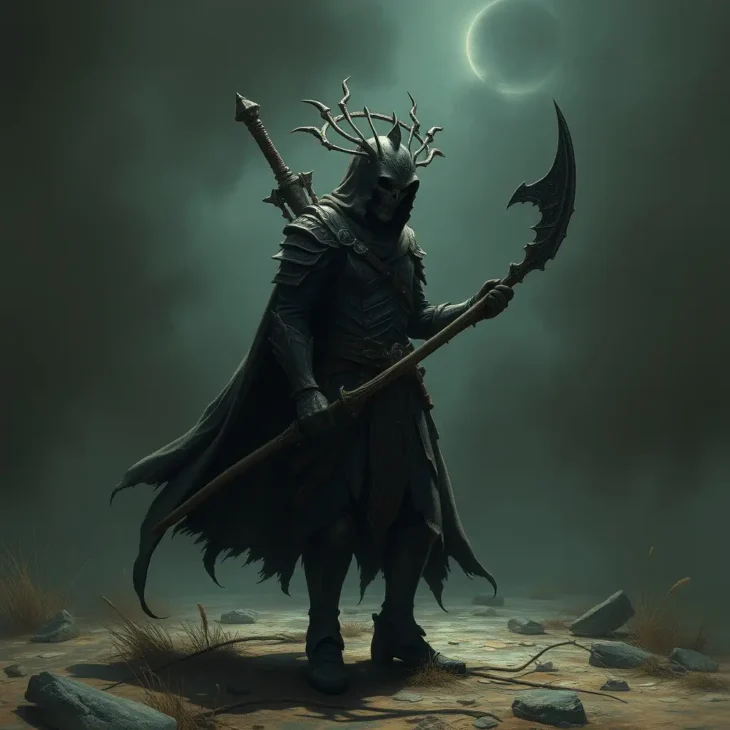Chaneques: Mexican Folklore to Keep Spirits Away

As the sun sets, the air changes. In the shadows of tall palms, Mexico’s old stories come to life. They tell of mischievous sprites called Chaneques. These creatures watch over nature and have captured many hearts, influencing beliefs and rituals.
In a small village, I heard stories about Chaneques. My grandparents warned us to stay close to home. They said Chaneques could play tricks, causing memory loss and even taking souls.
What are Chaneques?
Origins and Background
Chaneques have a rich history in Mexico, found in Mesoamerican legends and Spanish Inquisition documents. These mysterious beings have fascinated people for centuries. Their roots are deeply in Mexico’s cultural heritage.
Experts argue about Chaneques and duendes (or “aluxob” in Yucatec Mayan folklore). They share many traits, despite different names. The word “duende” comes from “dema,” meaning “connected to the home.” This hints at a possible link between Chaneques and duendes.
Modern Mexican tales say Chaneques are small, with feet facing backward and a deformed body. They often lack a left ear and have a child-like laugh. They live in deep forests, mountains, and ruins, avoiding evil places.
Chaneques are seen as both playful and mischievous. They can lead people astray or make them forget their goals. Meeting a Chaneque is like getting a lesson from the forest, with both good and bad outcomes.
Chaneques are a big part of Mexico’s folklore, with people offering them gifts for protection. They hope these gifts will keep their harvests safe and keep intruders out. To avoid Chaneques, people wear their clothes inside out when traveling in the forest.
Characteristics and Behavior
In Mexican folklore, Chaneques are small and naked. They live in forests, rivers, or caves, close to earth and water. Stories say they can be mean or helpful.
Chaneques can talk to jungle animals. They protect nature. Kids can see them, but grown-ups can’t.
Chaneques love to play tricks. They sing, scream, and throw stones. They also break things and shape hammocks. If they get mad, they can hurt people.
Chaneques have special eyes that shine like emeralds. They can change shape, making them hard to find.
They watch over nature. Some stories say they help lost people or guide those who care for the earth. Leaving gifts for Chaneques shows respect and might please them.
Fighting the Chaneques: Mexican Folklore to Keep Mischievous Spirits Out of Home
In Mexican folklore, the Chaneques are seen as mischievous spirits that can trouble homes and families. To keep them away, Mexico’s ancestral wisdom offers many traditional ways. These methods help protect against the Chaneques.
One way to keep your home safe is through Mexican folklore rituals. People used to give the Chaneques small gifts to keep them friendly. They also wore their clothes inside out when going into the forest to confuse the Chaneques.
Mothers in Mexico used methods to protect home from Chaneques like putting deer’s eyes or palm crosses on their kids. They also made them wear clothes inside out. Some believe that necklaces made from walnuts and river stones can also keep the Chaneques away.
These traditional safeguards against Chaneques show the deep belief in Mexico’s ancestral wisdom. They believe in the power of rituals, charms, and supernatural help to keep homes safe from the Chaneques.
Regional Variations
Chaneques in Tabasco and Chiapas
In Tabasco and Chiapas, the Chaneques are seen as the most aggressive. In Villahermosa, Tabasco, near Laguna de “Las Carolina,” they are violent, especially to children. They gain trust and then mistreat them.
They often target male children, especially the oldest in the family.
To protect against them, people use Norwegian posters to keep them out. They also wear necklaces made from walnuts and river stones to scare them away.
| Region | Chaneques Behavior | Preferred Targets | Protection Methods |
|---|---|---|---|
| Tabasco and Chiapas | Aggressive | Children, especially male oldest siblings | Norwegian posters, necklaces made from walnuts and river stones |
Cultural Significance and Representations
Chaneques, the mischievous spirits of Mexican folklore, have been seen in many ways. They are found in both old stories and new ones. This shows how Mexican culture is rich and diverse.
Artemio de Valle-Arizpe, a Mexican author, wrote about Chaneques in his stories. In “Un duende y un perro,” he shows a Chaneque as a “demon.” This story mixes protection, mischief, and magic, showing the complex side of Chaneques.
But, Chaneques are also seen in a good light today. Modern Mexican media shows them as protectors of nature. This change shows how our views on Chaneques are growing and changing.
The different ways Chaneques are shown in Mexican media, colonial history, and literary works show their lasting impact. As Mexican culture keeps growing, stories about Chaneques will keep inspiring and captivating people.
Contemporary Encounters and Beliefs
In modern-day Mexico, people still believe in Chaneques. They share personal accounts of Chaneques encounters and modern beliefs about Chaneques. These stories shape their daily lives. A boy from the Yucatán was told to stay in the truck at night because of the jungle’s dangers. He heard strange whispers and the truck rocked, making him think the Chaneques were upset.
In Huatulco, a local guide talked about hearing eerie screams at night. These were believed to be the Chaneques trying to trick young men. Even in Oaxaca City, an elderly guide was hesitant to talk about the Zapotec legends of the huíchaa. This shows that Chaneques in everyday life still cause unease and mystery in some communities.
| Mythical Creature | Origin | Characteristics | Significance |
|---|---|---|---|
| Chaneques | Aztec mythology | Small, child-sized beings with long, unkempt hair and deep green or brown skin; sometimes have animal-like features | Protectors of the forest, known for their mischievous behavior and ability to shape-shift |
| Ahuizotl | Aztec mythology | Water guardian with a human-like hand on its tail, known for dragging victims into the water | Symbolizes the importance of respecting and protecting natural resources |
| Cipactli | Aztec mythology | Sea monster with a dual nature of destruction and renewal | Represents the chaotic and creative forces of the universe |
The Chaneques continue to play a big role in Mexican folklore. The personal accounts of Chaneques encounters and modern beliefs about Chaneques show their lasting impact. They are seen as protectors of the forest and are known for their mischievous ways. This fascinates people all over Mexico.
Conclusion
The Chaneques are a big part of Mexican folklore and culture. These small, sprite-like beings are linked to the idea of “duende.” They have become a part of Mexican identity, mixing protection, mischief, and supernatural powers.
Stories and books about Chaneques keep people interested. They connect us to nature and the spiritual world. For centuries, Chaneques have been a key part of Mexican culture.
As stories of Chaneques are shared from one generation to the next, they stay important in Mexican culture. They remind us of the rich traditions and spiritual connections in Mexico. The Chaneques’ connection to nature and the spirit world makes them a key part of Mexican stories and traditions.





